From off-books cleaner to legal aide: NY migrants are getting work permits more quickly
April 4, 2024, 4 p.m.
More than 361,000 federal work permits were approved in December, twice as many as over the same month in 2022.
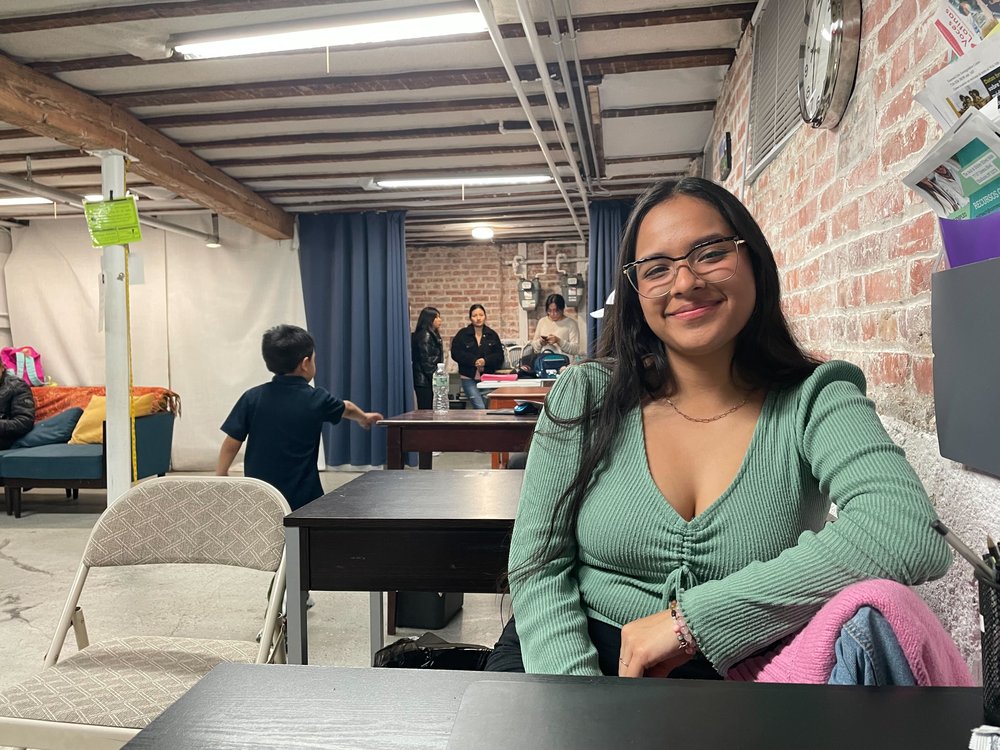
Patricia Llivisaca-Ramos was a legal assistant in her native Ecuador but took whatever work she could get after arriving in New York City two years ago.
That included cleaning homes in Brooklyn, earning $60 for two apartments or one three-story home in four hours. The 42-year-old met customers in public, then followed them to their homes. The experience left her feeling vulnerable and unsafe, and she always made sure to tell her husband where she was going.
“I would always try to remain alert and look where the entrances and exits were,” she said.
But Llivisaca-Ramos’ life took a different course in January after she obtained a coveted employment authorization document. The federal “work permit” allowed her to stop cleaning homes in the underground economy. She began a full-time job in January at an immigrant rights organization in Queens.
“It was life-changing,” said Llivisaca-Ramos, who rents a studio in Flushing with her partner and child, and regularly sends cash to her other children back in Ecuador. “My life took a 360-degree turn.”
It was life-changing. My life took a 360-degree turn.
Llivisaca-Ramos, after receiving her federal work permit
More migrants’ lives are taking similar turns, and are doing so at a quickening pace. The number of work permits approved by the federal government has steadily risen since summer, according to new data from the U.S. Citizenship and Immigration Services.
More than 361,000 work permits were approved in December, according to the U.S. Citizenship and Immigration Services. That’s twice as many as in December 2022, months into an immigration wave that has sent some 180,000 migrants to New York City. Approvals climbed to 382,000 in January, with local data reflected in the national totals.
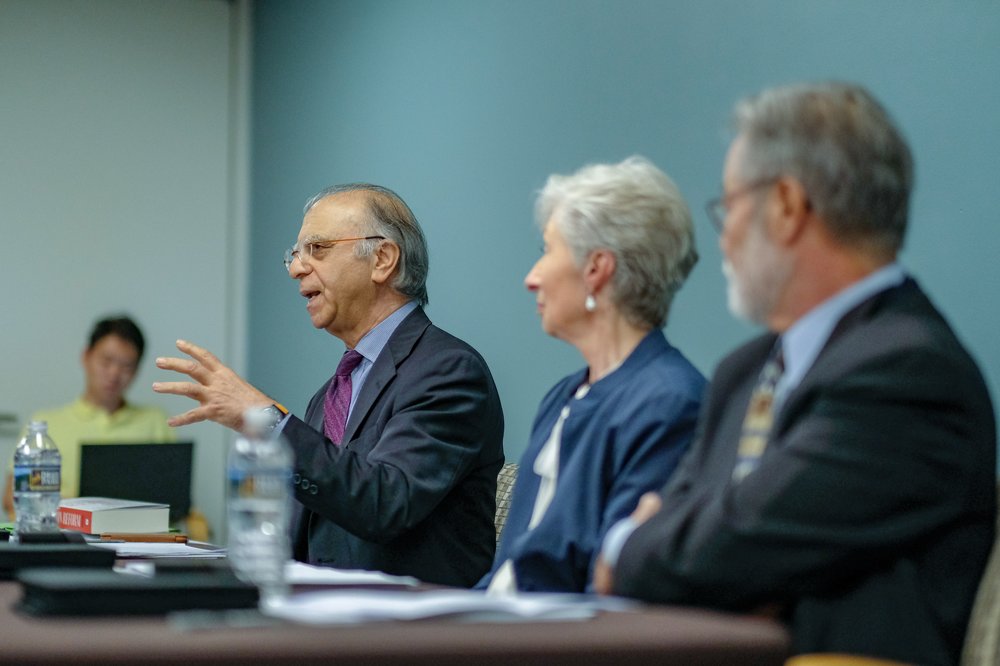
Work permits are also being processed more quickly, according to the data. It took an average of six-and-a-half months to process a permit between November 2022 and January 2023, but took under four months to do the same between November 2023 and January 2024.
The changes mean more recent arrivals are becoming legally and stably employed sooner, and filling demand in communities where workers are needed, according to immigration advocates and migrants themselves. Soon after migrants began showing up by the busload in New York in 2022, immigration advocates urged city, state and federal partners to speed up the filing and processing of work permits. A phalanx of volunteers, civic and charitable groups are bolstering government efforts to pick up the pace.
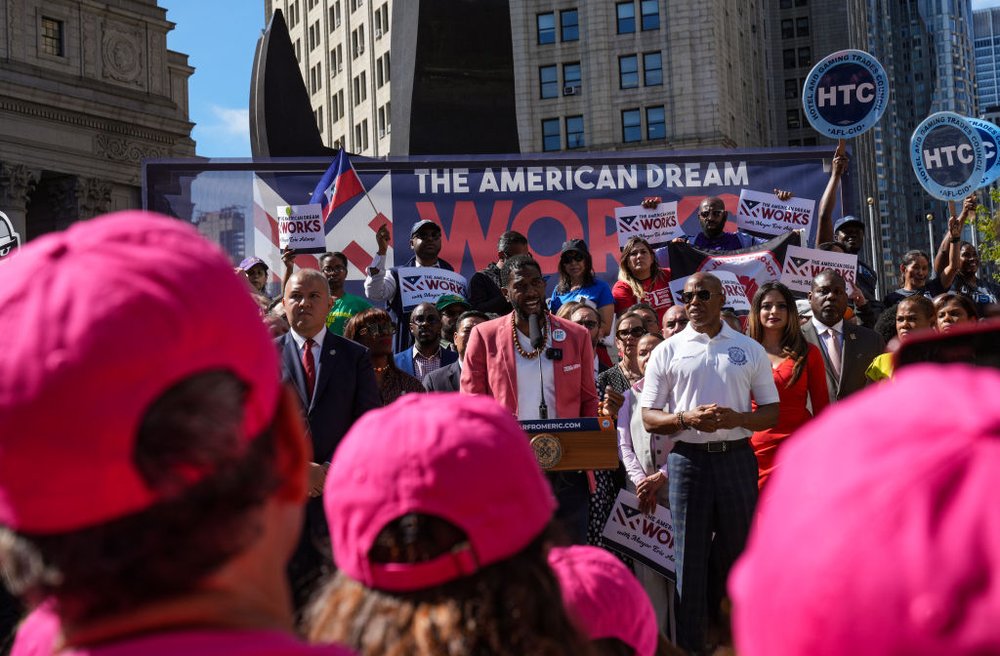
Muzaffar Chishti, a senior fellow and director of the Migration Policy Institute office at NYU School of Law, said “the processing of work authorization has gone through a radical change” at the federal level, including a move from paper to online processing and relieving USCIS staff of some other agency obligations, making the work filings a priority.
“They’re not getting enough credit for significant improvement,” said Chishti, referring to changes implemented by the Biden administration, most notably within USCIS. More importantly, advocates said, the quicker authorizations have been critical for newcomers' advancement and key to helping them leave city shelters.
“To be able to work legally is to be able to save up and get out of the shelter system,” said Ilze Thielmann, the director of Team TLC-NYC, a group that works with recent arrivals. “To be able to work legally is to have dignity, self-esteem and agency over one’s own destiny.”
“Getting a work authorization is utterly life-changing,” she said.
Hopes and dreams
Maria Jose Rodriguez Gomez, 20, an asylum applicant from Peru, arrived in the country in December 2022 and obtained a work permit in October. Before that, she volunteered with a nonprofit that helped migrants.
She said the experience helped her land a full-time job with an organization that assists migrants in need of legal guidance. Her first day on the job was in December.
The path to employment followed a traumatic period in Peru, where she said criminals tried to extort her mother and threatened to kill her brother. They also threatened to rape Rodriguez Gomez and push her into sex work, she said.
The family fled, traveling from Peru to Mexico. Handlers guided Rodriguez Gomez, her mother and brother, and they eventually landed at a river.
“They said, ‘just cross and once you cross there's the United States,’” Rodriguez Gomez said.
She spent two-and-a-half months in a detention facility, after which she arrived in New York and began spending time at the Jackson Heights Immigrant Center. She said it was a formative experience that helps in her current job.
“It feels very gratifying for me to be able to learn and do what I've been able to help other people that went through what I went through,” Rodriguez said.
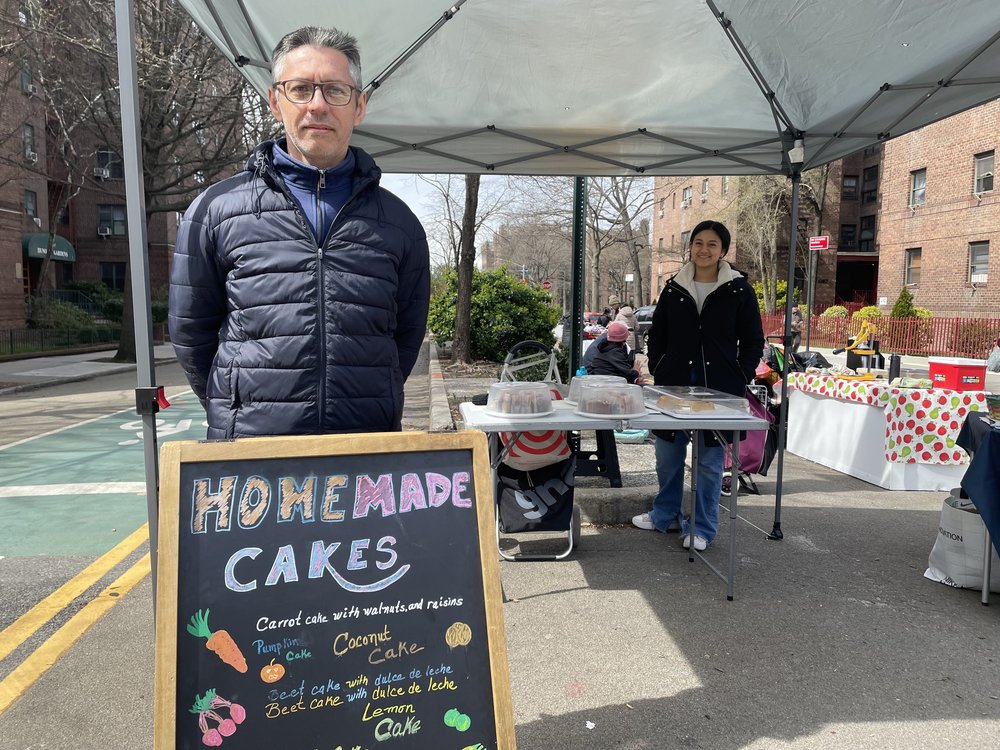
Gerson Sanchez, 53, originally from Venezuela, received his work permit in May 2023. It hasn’t been put to use just yet, but he’s been busy. Sanchez was previously an accountant but always nursed a desire to do something entrepreneurial, “related to baking or coffee shops.”
He moved in with relatives in Jackson Heights and started baking upon arriving in New York in January 2023. Sanchez said he sells 15 to 20 cakes in a typical week, and can be seen behind a stand at the local farmer’s market on Sundays. One day, he hopes to have his own brick-and-mortar bakery where he can sell Venezuelan delicacies, such as pastelitos andinos.
“Now that I'm here, that dream, that visualization is becoming a reality,” Sanchez said.
Slow-arriving help
Migrant aid groups said the quickened pace for work permits is a welcome change.
Nuala O’Doherty-Naranjo founded the Jackson Heights Immigrant Center in 2022 after realizing so many migrants weren’t receiving any guidance from the government concerning their legal options, including how to secure work authorization.
“Nobody was telling them,” said O’Doherty-Naranjo, a former prosecutor. “They didn't know the form. They didn't know anything.”
Murad Awawdeh, the executive director of the New York Immigration Coalition, said his organization urged the city to start providing legal assistance as soon as the first buses carrying migrants arrived at the Port Authority Bus Terminal in 2022. “I think the city of New York waited too long to start rolling out new legal services,” Awawdeh said.
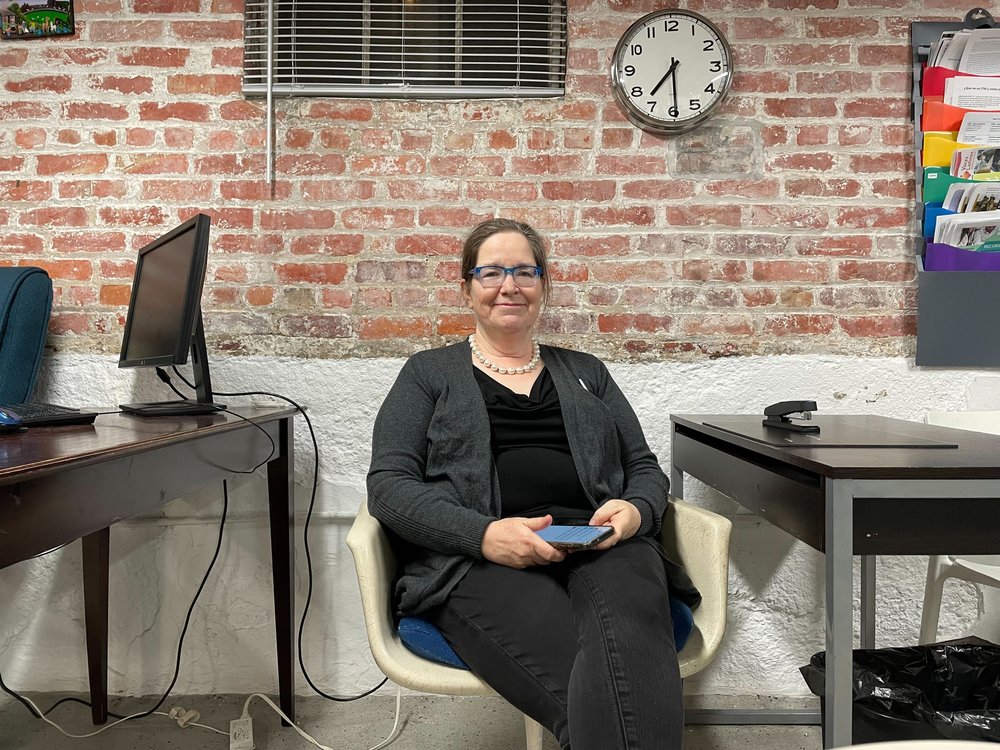
But last summer, as the number of migrants in city-run shelters neared 60,000, city officials warned that caring for migrants could cost taxpayers $12 billion over three years and directed their ire at the Biden administration.
Adams held a rally in late August with labor leaders, immigrant rights groups and other city officials, including some of his most vocal critics. Together, they called upon Biden to speed up approvals for work authorizations. More private and public efforts to speed up the bureaucracy followed.
The NYIC and Immigrant ARC helped organize a “Legal Clinic Blitz” for migrants with help from other groups. The event took place over two weeks in late September and early October and included officials from the city, state and federal governments, including the USCIS.
It was the first such private-public collaboration to help new arrivals prepare and submit work authorization applications, according to the NYIC, and resulted in the filing of more than 1,700 work permit applications.
“Instead of having people wait to do everything, your biometrics or even your fee waiver getting accepted and adjudicated and then having your application accepted in total, that was kind of like a one-stop shop,” Awawdeh said.
The same approach was employed at John Jay College of Criminal Justice in late November, where 10 federal immigration officers were on hand to review applications and requests for fee waivers as well as collect fingerprints.
Camille Mackler, the executive director of Immigrant ARC, called it a “pop-up model” for immigration that followed years of deliberation among federal agencies and an understanding that the processing of immigration forms had become antiquated.
“I think it really came to a head during the pandemic,” she said.
According to the Adams administration, the city has helped complete 16,812 work authorization applications through March 24, along with over 13,000 asylum applications and 11,000 applications for Temporary Protected Status, or TPS, which grants temporary legal status to people who have come from a country the United States deems unsafe to return to.
The forms were processed at the Asylum Application Help Center, which the city launched at the Midtown headquarters of the Red Cross in July. Other cities unexpectedly serving large numbers of migrants have mounted similar operations.
“Throughout this humanitarian crisis, New York City has led the nation and used every tool available to help arriving migrants pursue the American Dream and continue on their path towards a life of self-sufficiency,” Adams said in a statement.
‘You’re going to make me proud’
Assemblymember Catalina Cruz, a Democrat who represents parts of Queens and was undocumented for a decade, noted that a “gigantic portion” of new migrants still lack work permits.
But, for those who secured permits, “the universe of where you can go find work opens up.”
“You may not be able to pick up a brand new career,” said Cruz, “but you're certainly going to be able to have the job security that you didn't have before. If you're being mistreated at work because you now have a work permit you have the luxury of saying, ‘I'm not staying here.’”
O’Doherty-Naranjo said immigrants typically get a notification online when the card has been printed and again when it’s in the mail.
“They love to come and show me the little card,” she said. “They do this little dance, they're so happy.” After working off the books or as day laborers, she said, the card suddenly confers a kind of “legitimacy.”
She added: “Now they can kind of say, ‘This is my first start, my first step into my life here in New York City. I now have a Social Security number, I have work authorization, I'm a New Yorker ready to work here and contribute to my new life here in the United States.’”
Rodriguez Gomez wanted to get her mother and brother something special with her first paycheck. She bought her mother a necklace and earring set, and bought her and her brother new sneakers. She also took the family out to dinner at a Peruvian restaurant, Pio Pio.
“I felt like the happiest person in the world,” she said.

She hopes they can leave her uncle’s apartment and get their own place at some point, and perhaps even bring another family member from Peru: her dog Luna.
Llivisaca-Ramos, the former legal assistant who cleaned homes, obtained her work permit in November and started her new job at O’Doherty-Naranjo’s Jackson Heights Immigrant Center in January.
She earns about $1,900 every two weeks. She and her partner rent a studio in Flushing, and she sends money to Venezuela, where she has two children in their early 20s who are both in college, as well as a 15-year-old who’s in high school.
“I felt happy and safe, especially as a mother, to be able to know that I have something to give to my children,” she said. “It makes me feel really good.”
Yair Julio Tucno Moquillaza, a 20-year-old from Peru, received his work permit in March but hasn’t started looking. His mother now has her work authorization and provides for him, while he secures his future in other ways.
Over coffee at a bakery in Jackson Heights, Moquillaza pulled out his phone and displayed a picture of his permit, which looks nearly identical to a Social Security card but with the words “Valid for Work Only with DHS Authorization.”
He said his immediate objective was to pass his GED exam in April, then go to college. He wants to study systems engineering, a goal that has taken on a different meaning since his father died back in Peru, at age 40.
“I always remembered my father's words," he said. "He used to tell me, ‘Keep going. No matter what comes in front of you, keep going. And I know you can do it, son. I know you’re going to make me proud.’”
For asylum seekers, Manhattan is only part of a harrowing journey For NYC migrants, just getting inside immigration courthouse is a feat How Mayor Adams and President Biden helped set the stage for immigration reform, however unwittingly Where did the migrants who left NYC’s shelter system go?